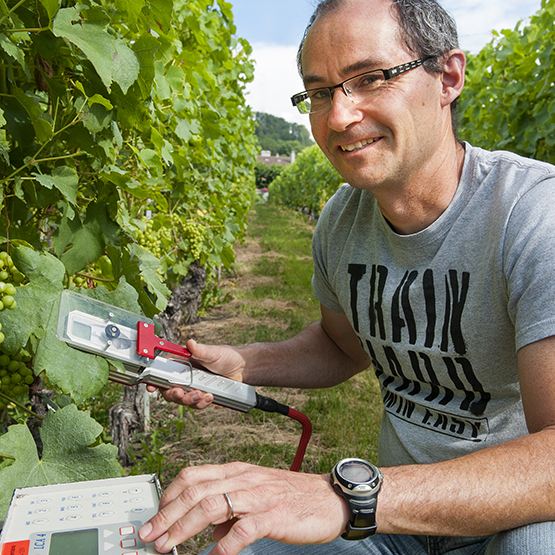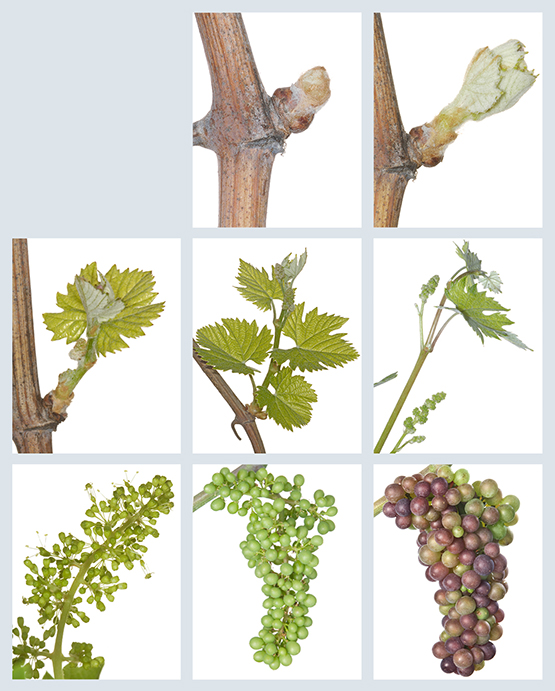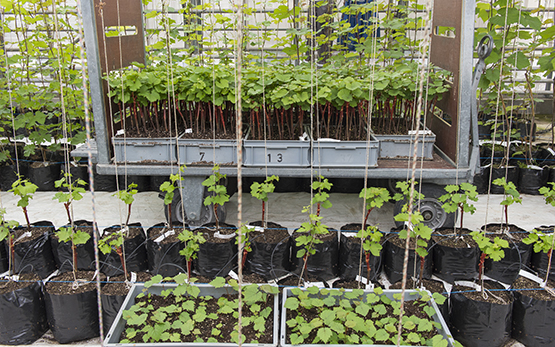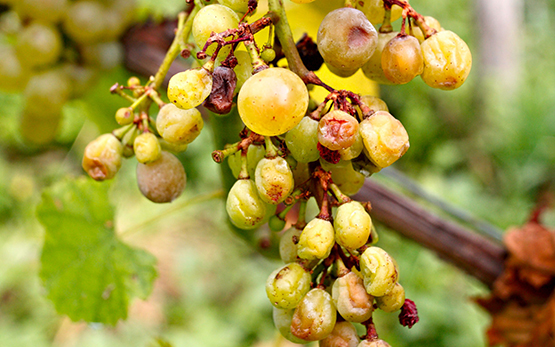Swiss viticulture is distinguished by its alpine character, its exceptional landscapes, a multitude of microclimates, and a wide range of grape varieties. Agroscope experts work on projects that address the consequences of climate change and the adaptation of grapevines to these new conditions, for sustainable production.
In Switzerland, grapevines develop on south-facing slopes, along the lakes, and in alpine valleys. The area where they are established has been defined by generations of winegrowers for specific aims and within highly varied socio-economic contexts. The result is a wide range of grape varieties.
Now wetter, now drier
Since time immemorial, climatic conditions have evolved along with the rhythm of the seasons, and perennial plants have felt their effects, adapting to them as best they could. For over 20 years, meteorological records have indicated a tendency to warming, with more or less precise future temperature-progression scenarios. For precipitation the modelling is less precise, forecasting seasons that are sometimes wetter, sometimes drier. Precision irrigation as a function of crop-management practices and the wine researched, gains in importance during a particularly dry vintage, as in 2015.
Longstanding data
The Agroscope Viticulture Research Centre in Pully has been recording climatic parameters and the phenology of the Chasselas grape variety since 1925. During this long observation period, it has been noted that bud burst has shown a slight tendency to delay, with extremes of precocity in 1990 (19 March) and lateness in 1956 (5 May), a year marked by a historic winter frost.
The onset of flowering tends to be earlier, with extremes of precocity in 2011 and 1948 (5 May) and lateness in 1980 (7 July). The same tendency can be observed for the onset of ripening, when grapes change colour.
The random sampling of Chasselas on 20 September shows an average of 69.8 °Oe, with a clear upward trend, the outliers being 49 °Oe in 1939 and 85.7 °Oe in 2015, as well as 85 °Oe in both 1945 and 1947.
Good adaptive capacity
These results show that vines readily adapts to climatic variations, and that in the case of Switzerland, benefit from warmer conditions. At present, they are certainly one of the crop plants best adapted to climate change. Despite all this, questions remain as to the optimisation of the harvest date as a function of the parameters determining wine quality. Said parameters differ according to crop-management practices and type of wines studied, pedoclimatic situations, grape varieties and clones. It is not enough to harvest earlier to preserve the best possible sugar-acidity balance – it is also necessary to define the ripeness of other compounds such as anthocyanins, polyphenols and tannins.
Greater flexibility in grape varieties
Climate change increases pressure from fungal pathogens, as well as from recurrent and emergent pests. In this context, the selection of the best-adapted grape varieties and clones forms part of Agroscope’s viticulture research priorities, underlying practically all of the clones entered in the national list for the production of certified planting material.
The creation of grape varieties resistant to fungal diseases, such as Divico (Gamaret x Bronner), available since 2013, is another result of research in response to the adaptation of varieties to climatic conditions with a view to sustainable and environmentally friendly production. This variety requires at least two to three fungicide sprays, compared to seven or eight for the usual grape varieties.
New problems in prospect
Climate is not constant, and the warming that has been measured for over 20 years directly influences the behaviour of the vine and of microorganisms. The latter will always win the battle thanks to their flexibility, which provides them with an especially dynamic capacity to adapt both to the climate and to plant-protection products. Grape varieties with polygenic resistance are the only prospect for loading the dice in favour of the vine, and risk prediction as a function of microclimates allows for the precise management of plant-protection inputs.
Despite all this, liberalised trade in plant material tends to confront us with new plant-protection problems requiring solutions, as in the case of flavescence dorée phytoplasma, Drosophila suzukii, or Xylella fastidiosa, the bacterium responsible for Pierce’s disease of grapevines which is not yet present on European territory, but whose subspecies are gradually spreading into Europe and are capable of infecting over 200 host plants.
In the context of global warming, the Swiss wine economy will continue to adapt in order to guarantee original, high-quality wines from sustainable production systems to consumers – thanks to Agroscope’s innovative research projects, conducted on the basis of a wide range of grape varieties.









